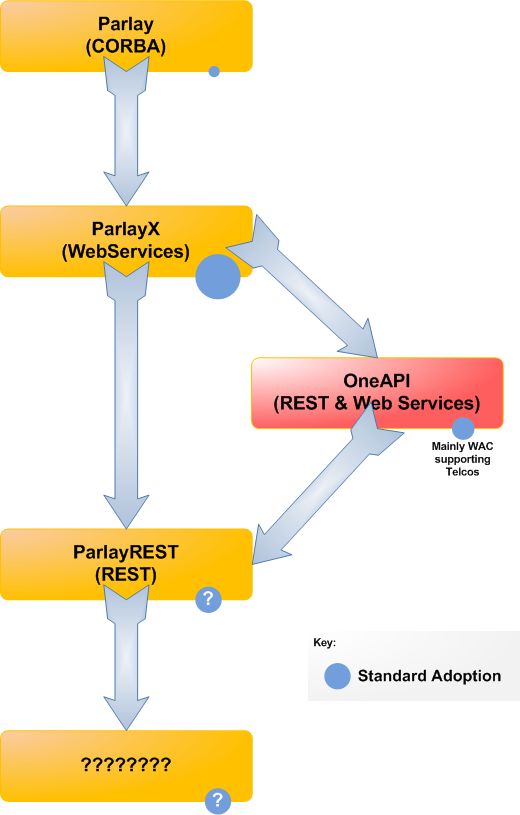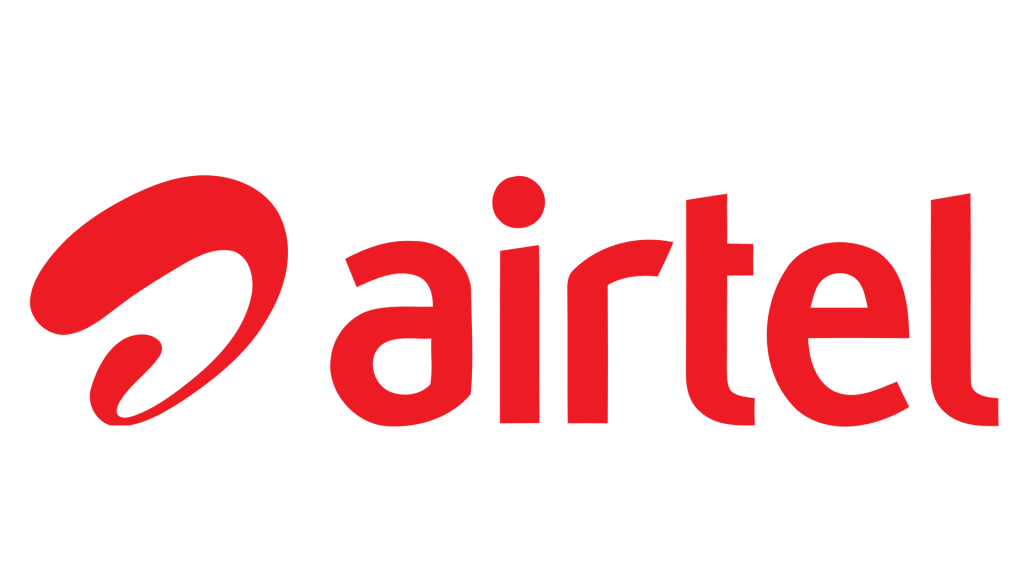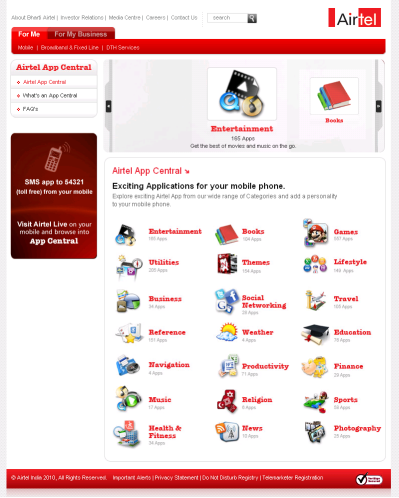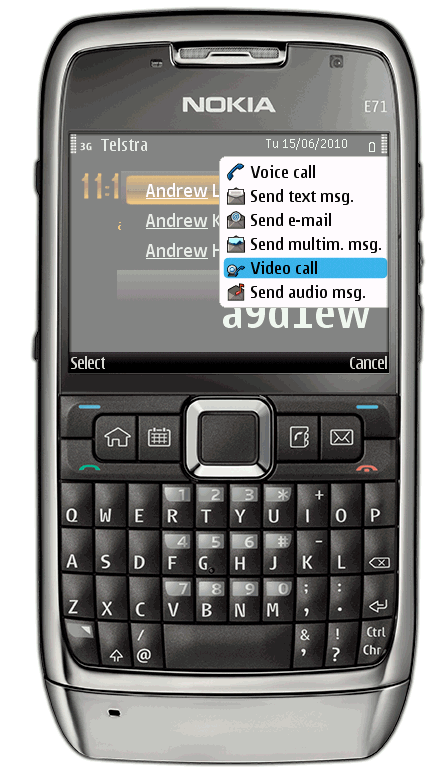Originally posted on 21Mar14 to IBM Developerworks (14,349 Views)
Why TMF Frameworx?
The TeleManagement Forum (TMF) have defined a set of four frameworks collectively known as Frameworx. The key frameworks that will deliver business value to the CSP are the Information Framework(SID) and the Process Framework (eTOM). Both of these can deliver increased business agility – which will reduce time to market and lower IT costs. In particular if a CSP is undertaking with the multiple major IT projects in the near term, TMF Frameworx alignment will ease the pain associated with those major projects.
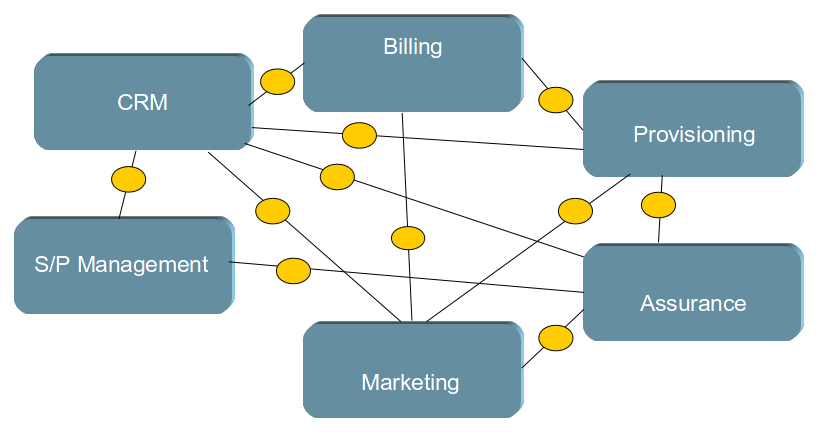
Without a Services Oriented Architecture (SOA), such as many CSP’s have currently, there is no common integration layer, no common way to perform format transformations with that multiple systems can communicate correctly. A typical illustration of this point to point integration might look like the Illustration to the right:
Each of the orange ovals represents a transformation of information so that the two systems can understand each other – each of which must be developed and maintained independently. These transformations will typically be built with a range of different technologies and method, thus increasing the IT costs of integrating, maintaining such transformations, not to mention maintaining competency within the IT organisation.
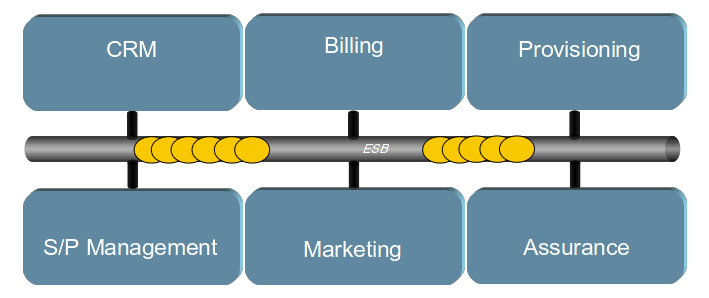
A basic SOA environment introduces the concept of an Enterprise Service Bus which provides a common way to integrate systems together and a common way of building transformation of information model used by multiple systems. The Illustration below shows this basic Services Oriented Architecture – note that we still have the same number of transformations to build and maintain, but now they can be built using a common method, tools and skills.
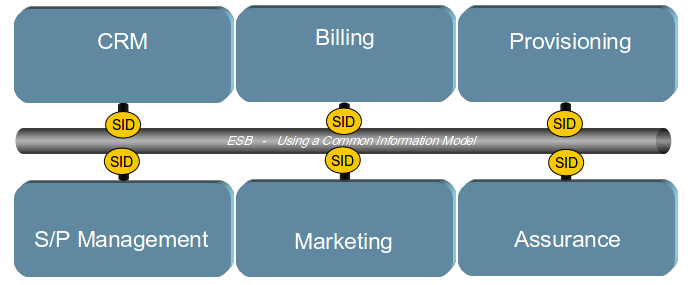
If we now introduce a standard information model such as the SID from the TeleManagement Forum, we can reduce the number of transformation that need to be built and maintained to one per system as shown in the Illustration below. Ensuring that all the traffic across the ESB is SID aligned means that as the CSP changes systems (such as CRM or Billing) the effort required to integrate the new system into the environment is dramatically reduced. That will enable the introduction of new systems faster than could otherwise been achieved. It will also reduce the ongoing IT maintenance costs.
As I’m sure you’re aware, most end to end business processes need to orchestrate multiple systems. If we take the next step and insulate those end to end business processes from the functions that are specific to the various end point systems using a standard Process Framework such as eTOM, then business process can be independent of systems such as CRM, Billing, Provisioning etc. That means that if those systems change in the future (as many CSPs are looking to do) the end to end business processes will not need to change – in fact the process will not even be aware that the end system has changed.
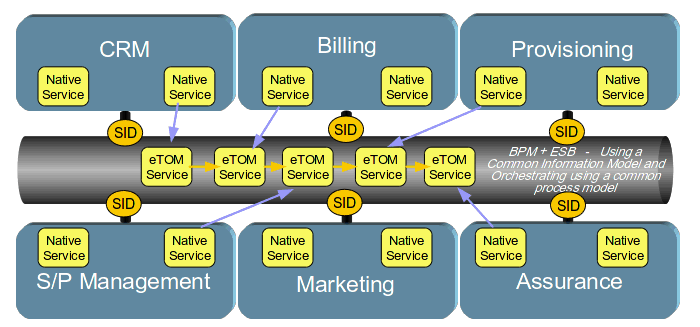
When changing (say) the CRM system, you will need to remap the eTOM business services to the specific native services and rebuild a single integration and a single transformation to/from the standard data model (SID). This is a significant reduction in effort required to introduce new systems into the CSP’s environment. Additionally, if the CSP decide to take a phased approach to the migration of the CRM systems (as opposed to a big bang) the eTOM aligned business processes can dynamically select which of the two CRM systems should be used for this particular process instance.
What that means for the CSP.
Putting in place a robust integration and process orchestration environment that is aligned to TMF Frameworx should be the CSP’s first priority; this will not only allow the subsequent major projects integration and migration efforts to be minimised, it will also reduce the time to market for new processes and product that the CSP might offer into the market.
Telekom Slovenia is a perfect example of this. When the Slovenian government forced Mobitel (Slovenia) and Telekom Slovenia to merge, having the alignment with the SID and eTOM within Mobitel allowed the merged organisation to meet the governments deadlines for the specific target KPIs:
- Be able to provide subscribers with a joint bill
- Enable CSR from both organisations to sell/service products from both organisations
- Offer a quad-play product that combined offerings from both Telekom Slovenia and Mobitel
- All within six months.
Recommended Approach
When a CSP is undertaking multiple concurrent major IT replacement projects, there are a number of recommendations that IBM would make based on past observations with other CSPs that have also undertaken significant and multiple system replacement projects:
- Use TMF Frameworx to minimise integration work (requires integration and process orchestration environment such as the ESB/SOA project is building) to be in place
- Use TMF eTOM to build system independent business processes so that as those major systems change, end to end business processes do not need to change and can dynamically select the legacy or new system during the migration phases of the system replacement projects.
- To achieve, 1 and 2, the CSP will need to have the SOA and BPM infrastructure that is capable of integration with ALL of the systems (not just limited to (say) CRM or ERP) within the CSP in place first
- If you have the luxury of time, don’t try to run the projects simultaneously, rather run them linearly. If this cannot be achieved due to business constraints, limit the concurrent projects to as few systems as possible, and preferably to systems that don’t have a lot of interaction with each other.

